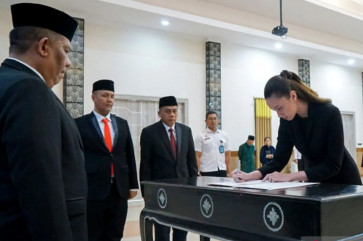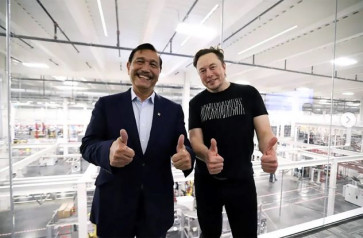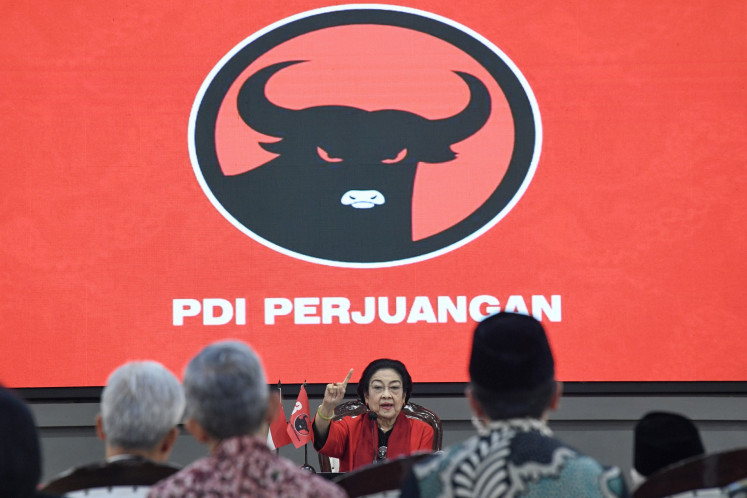APEC after 25 years: A look backward and a thought forward
Asia-Pacific Economic Cooperation (APEC) is 25 years old this week and the leaders of its 21 member economies, the worldâs largest regional economic group, will be hosted by Chinaâs President Xi Jinping in Beijing to celebrate
Change Size

A
sia-Pacific Economic Cooperation (APEC) is 25 years old this week and the leaders of its 21 member economies, the world's largest regional economic group, will be hosted by China's President Xi Jinping in Beijing to celebrate.
Although officially APEC is 25 years old, the so-called APEC attempt, or attempt at economic cooperation among the Asia-Pacific economies (countries) began more than 40 years ago.
The first group of people who saw the benefits of economic cooperation in Asia-Pacific was businesspeople. They saw the opportunity for trade and investment, or the opportunity to make money. This is not unlike the Arab/Indian merchants who sought trade cooperation with Southeast Asia more than 1,000 years ago or the merchants along the famous Asian Silk Road. Another route of development that eventually reached to APEC was through academia, through the development of public-policy thought.
The organization in this development was the Pacific Trade and Development Conference (PAFTAD), which began in 1968. It came about because some prominent scholars in Asia-Pacific countries, notably again the US, Japan and Australia, believed that if the Asia-Pacific countries followed the common policy of liberalized trade and investment, it would be good for their economic development.
It is not uncommon in Asia-Pacific for policy scholars, known as technocrats, to become involved in government either directly or indirectly, thus allowing them to initiate important policies or major policy changes.
For APEC, two such technocrats whose names should be mentioned were the late Dr. Saburo Okita, a former secretary-general of the Economic and Social Commission for Asia and the Pacific (ESCAP) and the minister of foreign affairs in the Ohira government in Japan, and Sir John Crawford, a former chancellor of the Australian National University. They persuaded their respective prime ministers, Masayoshi Ohira of Japan and John Malcolm Fraser of Australia, to host a conference to discuss the idea of setting up an organization called the Asia-Pacific Economic Community.
The conference called 'The Pacific Community Seminar' was held in Canberra in 1980. I was a member of the Thailand group, along with Dr. Snoh Unakul who was the secretary-general of the National Economic and Social Development Board, and Dr. Thanat Khoman, the Thai deputy prime minister at that time. Other countries also sent high-profile participants. For example the US sent Richard Holbrook, who later became the US representative at the UN.
________________
A more sensitive and more complicated challenge is in the liberalization of trade in services.
The conference failed to reach a consensus on the setting up of APEC but agreed that the idea should be developed further in a semi-official way ' the so called Track Two. Two years later, at the request of my PAFTAD colleagues, and with financial support from Japan and a semi-official request from Australia, Thailand with the leadership of Dr. Thanat, hosted a conference on APEC again. I was responsible for the organization of this conference. Out of this conference, we agreed to set up the Pacific Economic Cooperation Council (PECC).
The PECC kept the idea of setting up APEC alive until 1989 when the first ministerial meeting was held, thus giving birth to the official setting up of APEC. By that time China was actively involved in Asia-Pacific trade, and the Cold War was ending, signaling a major burst of global trade and investment.
To accelerate the APEC process, the Eminent Persons Group (EPG) was set up to prepare the work plan. I represented Thailand in the EPG. Events were changing very fast. The Cold War ended with the breaking up of the Soviet Union in 1991. Then the General Agreement on Tariffs and Trade (GATT) Uruguay Round was reaching a conclusion.
With these major changes in the global economy the EPG saw the need for APEC even more. So to create a political foothold for APEC, the EPG recommended a summit of APEC leaders, to be hosted first by the US. It was Dr. Fred Bergsten, the US EPG member who called the White House from our meeting in Tokyo in July 1993 to propose the idea. President Clinton agreed with the recommendation. Thus the first APEC Summit was held at Blake Island, Seattle and there has been a series of APEC summits held annually ever since.
Looking back I was very pleased with APEC, particularly in terms of its timeliness. During 1993-2000 the global economic order changed a lot, with the GATT Uruguay round conclusion and the setting up of the World Trade Organization (WTO). Then in 2001 China was admitted into the WTO.
In the same year the WTO announced the Doha Round of negotiations, to be met with a lot of
resistance up until now. In the meantime most countries began to adopt regional trade agreements (RTAs) and free trade agreements (FTAs) as the means for trade and investment liberalization.
We can attribute much of these developments to APEC, for it was APEC that kept the principle of open trade and investment, plus technical cooperation, alive.
Looking forward I see an even more important role for APEC in promoting Asia-Pacific trade and investment. Economically Asia-Pacific is highly integrated, due to the economic complementarity of the member economies and the utilization of the supply-chain model of production and trade. This had to be the correct business model, as is obvious to everyone in that the APEC economies have all become much larger today compared to two decades ago.
The increase in wealth of the APEC member economies ' particularly the Asian ones ' poses a number of new challenges, economic as well as political. The economic challenge is in investment in commercial infrastructure to support greater connectivity. This requires cooperation in the development of the capital market in order to properly manage savings for investment, and in the utilization of the know-how for infrastructure development.
A more sensitive and more complicated challenge is in the liberalization of trade in services, and the differences behind border commercial rules and regulations. It is a forum like APEC that can facilitate consultations and negotiations that will lead to changes that are politically viable.
The APEC forum, particularly the leaders' summit which has become institutionalized, allows such issues to be discussed among the parties concerned.
Obviously, the APEC future will not be the same as the APEC past, for the member economies have become much less unequal in terms of the economic well-being of their people.
So their economic interests have become more similar, and more interdependent. If the member economies are mindful of these changes, cooperation under the APEC scheme should be of mutual benefit to all.
Happy 25th anniversary to APEC.
__________________
The writer is the Thai minister of energy, member of the APEC Eminent Persons Group and chair of the Thailand National Committee for Pacific Economic Cooperation.









